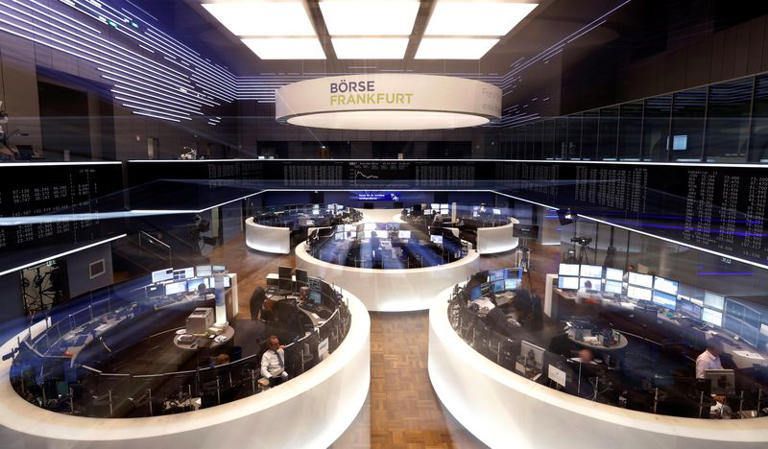This week has seen a series of disruptions for investors, driven by a combination of geopolitical tensions, domestic political uncertainties, and economic policy challenges. The turbulence has been characterized by sharp declines in technology stocks, a cautious mood in global markets, and a retreat from some key economic forecasts. The confluence of these factors reflects a broader sense of instability in financial markets.
Technology Sector Struggles: The technology sector has been at the forefront of this week’s market struggles. The ongoing trade dispute between the U.S. and China has intensified, contributing to a selloff in tech stocks. This sector, which has been a major driver of market growth in recent years, is now facing significant headwinds. The negative sentiment has extended beyond individual companies, impacting broader market indices. For instance, Taiwan Semiconductor Manufacturing Company (TSMC), the world’s largest contract chipmaker, has experienced a substantial decline in its stock value. Despite reporting strong earnings and positive forecasts, TSMC’s shares have continued to fall. The company’s market value has dropped by more than T$2 trillion ($61.06 billion), reflecting investor concerns about potential U.S. restrictions on Chinese tech companies and geopolitical risks.
Global Economic Sentiment: The global economic outlook has become increasingly uncertain. This uncertainty has overshadowed interest rate expectations, which might have otherwise provided some stability. The attempted assassination of Donald Trump, a prominent Republican presidential candidate, has added to market anxieties, causing a notable spike in the VIX index, which measures market volatility and investor fear. This incident reflects broader concerns about political instability and its potential impact on financial markets.
Market Reactions and Currency Movements: Asian markets have faced considerable difficulties, mirroring the selloff in the technology sector. European markets are also set to open lower, reflecting the negative sentiment that has spread globally. The cautious mood has provided some support to the U.S. dollar, which had recently fallen to a four-month low due to rising expectations of a Federal Reserve rate cut. The Fed’s potential rate cut in September, combined with a more dovish stance from the European Central Bank (ECB), has influenced currency movements. The ECB has signaled that it might also adjust rates, contributing to a complex environment for global currencies.
Bank of England and UK Retail Sales: In the UK, the Bank of England (BoE) is expected to maintain its current interest rates, as conditions do not support an immediate rate cut. Traders have adjusted their expectations, reducing the likelihood of an August rate cut. This decision comes amid challenging economic conditions, reflected in upcoming UK retail sales figures. Expectations are that retail sales will show a decline, likely due to adverse weather conditions in June, which have reportedly kept consumers away from shopping.
China’s Economic Policy Challenges: China’s economic landscape has been complicated by recent developments at a key Communist Party meeting. Officials have acknowledged that the economic goals outlined contain “many complex contradictions,” suggesting that the path forward for policy implementation could be fraught with difficulties. This acknowledgment highlights the challenges faced by China in balancing its economic ambitions with practical policy measures, contributing to a cautious outlook for the Chinese economy.
In summary, the current market environment is characterized by heightened volatility and uncertainty. Geopolitical tensions, trade disputes, political instability, and economic policy challenges are all contributing to a complex and shifting financial landscape. Investors are navigating these challenges, with significant implications for market strategies and economic forecasts.
